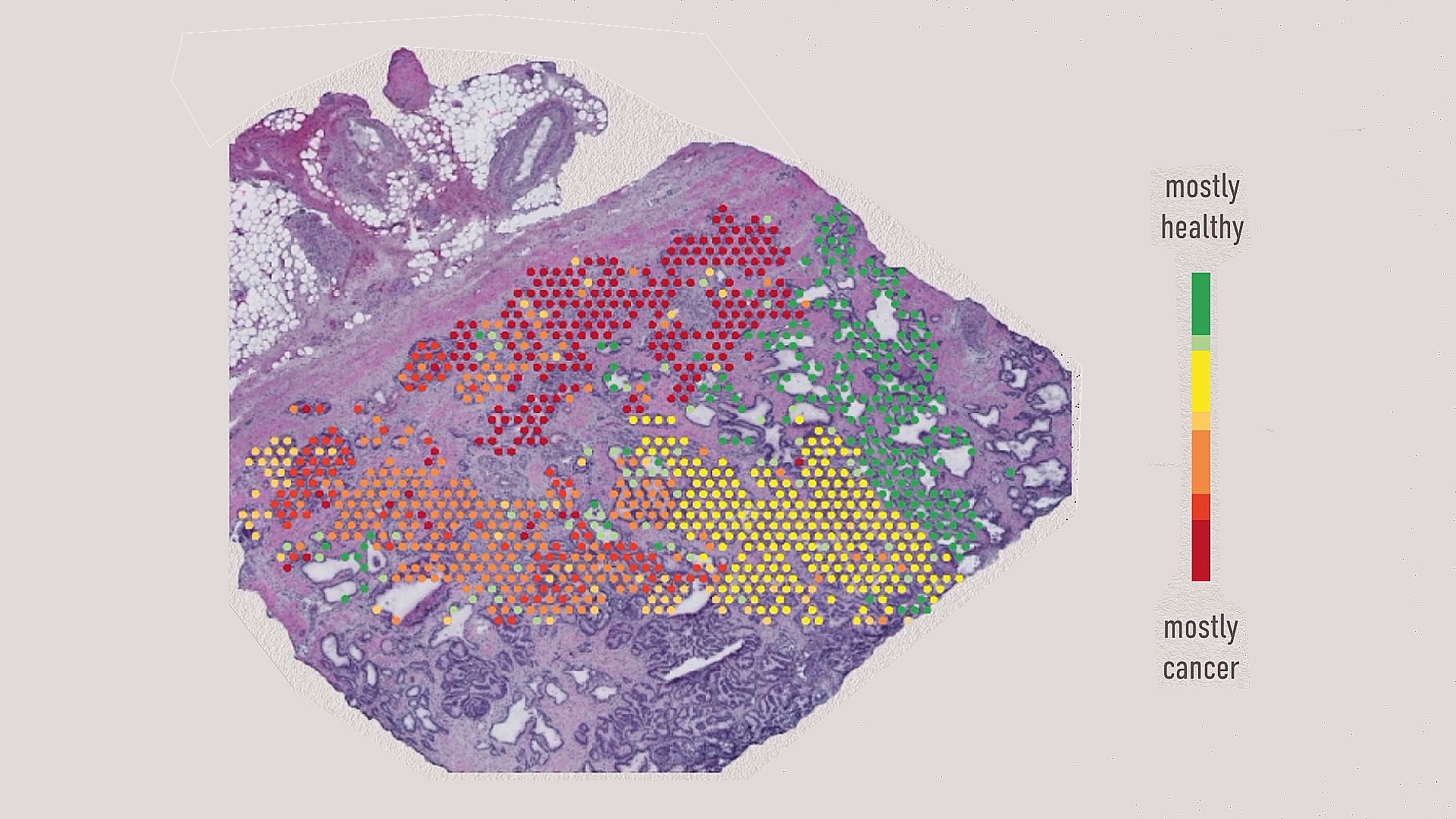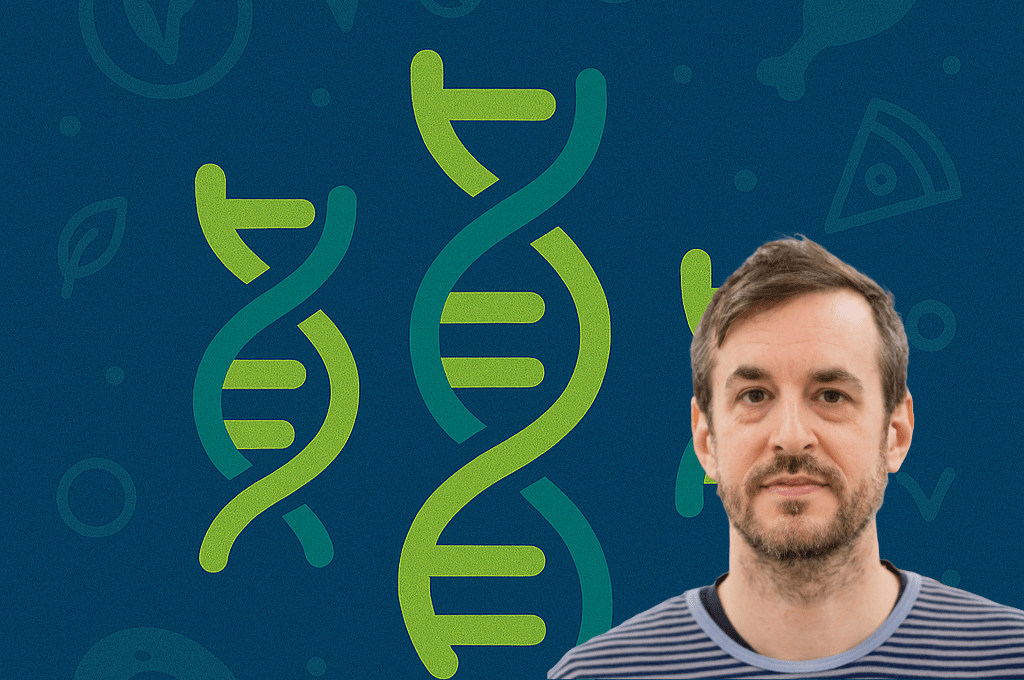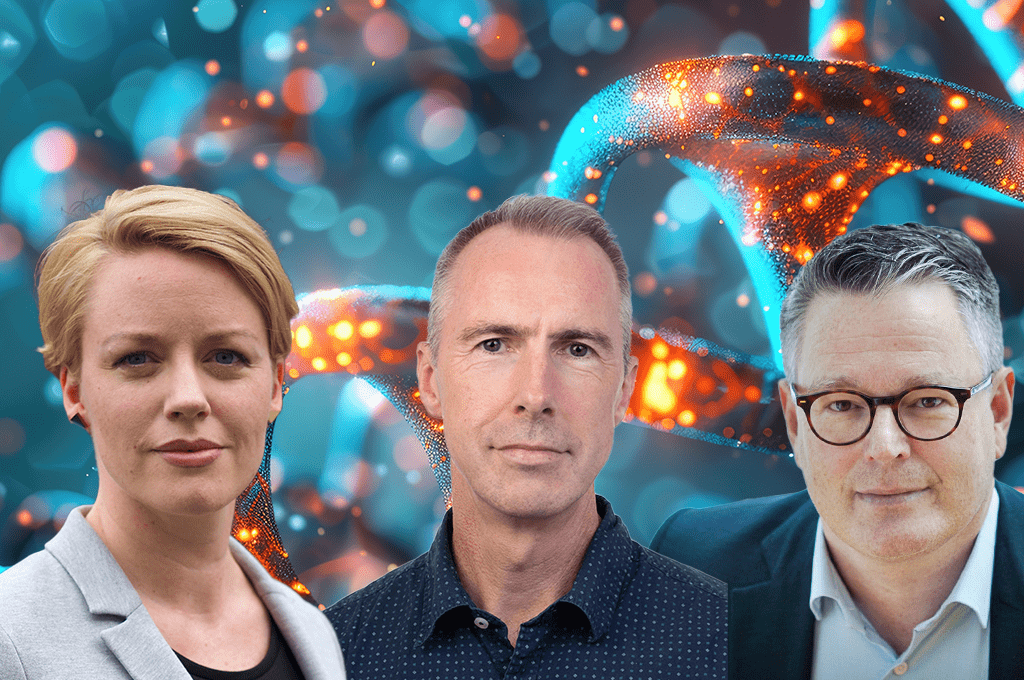Spatial transcriptomics reveals cancer in seemingly benign tissue
An international team of researchers, led by SciLifeLab researcher Joakim Lundeberg (KTH) and University of Oxford researcher Alastair Lamb, has demonstrated that spatial transcriptomics can successfully be used to detect genetic alterations in seemingly benign tissue samples long before they can be detected as cancer cells by commonly used screening techniques.
When histological samples are examined for cancer cells, it is possible to discover malignant cells and tumors visually through a microscope. Unfortunately, it is not possible to detect if surrounding benign cells contains the same mutations, which might turn them into cancer cells later on. Defining the transition from benign to malignant tissue is therefore fundamental when it comes to early diagnosis of cancer.
In a recent study, published in the prestigious journal Nature, researchers from Karolinska Institutet, KTH, and the University of Oxford, successfully used spatial transcriptomics to detect genetic alterations, similar to those in cancer cells; in seemingly healthy tissue cross-sections of prostate samples.
“This was such a surprise. You would not capture this in routine microscopic examinations. We are seeing things outside of the tumor, and what is so exciting is that we could get an understanding of the evolution from healthy tissue to tumor establishment”, says co-last author Joakim Lundeberg, in a press release from KTH.
“It’s possible now that we could actually be able to identify the earliest events in cancer progression. Imagine if we could define these molecular signatures to develop biomarkers to screen and identify patients before a tumor develops,” he continues.
The researchers looked for genetic alterations (copy number variations) in >120,000 regions across multiple organs, in benign and malignant tissues, and could identify distinct patterns within tumors and in nearby, seemingly benign, tissue in prostate samples.
“We have never had this level of resolution available before. For example, we have found that many of the copy number events we previously thought to be linked specifically to cancer are actually already present in benign tissue. This has big implications for diagnosis and also potentially for deciding which bits of a cancer need treating”, says co-last author and urologist Alastair Lamb, in a press statement from Oxford.
The study presents a new model for how genomic instability might arise in histologically benign tissue, as a possible first step in cancer progression. The researchers also demonstrated that spatial transcriptomics carried out on whole tissue samples could challenge the rationale for treatment paradigms, including focal therapy.





